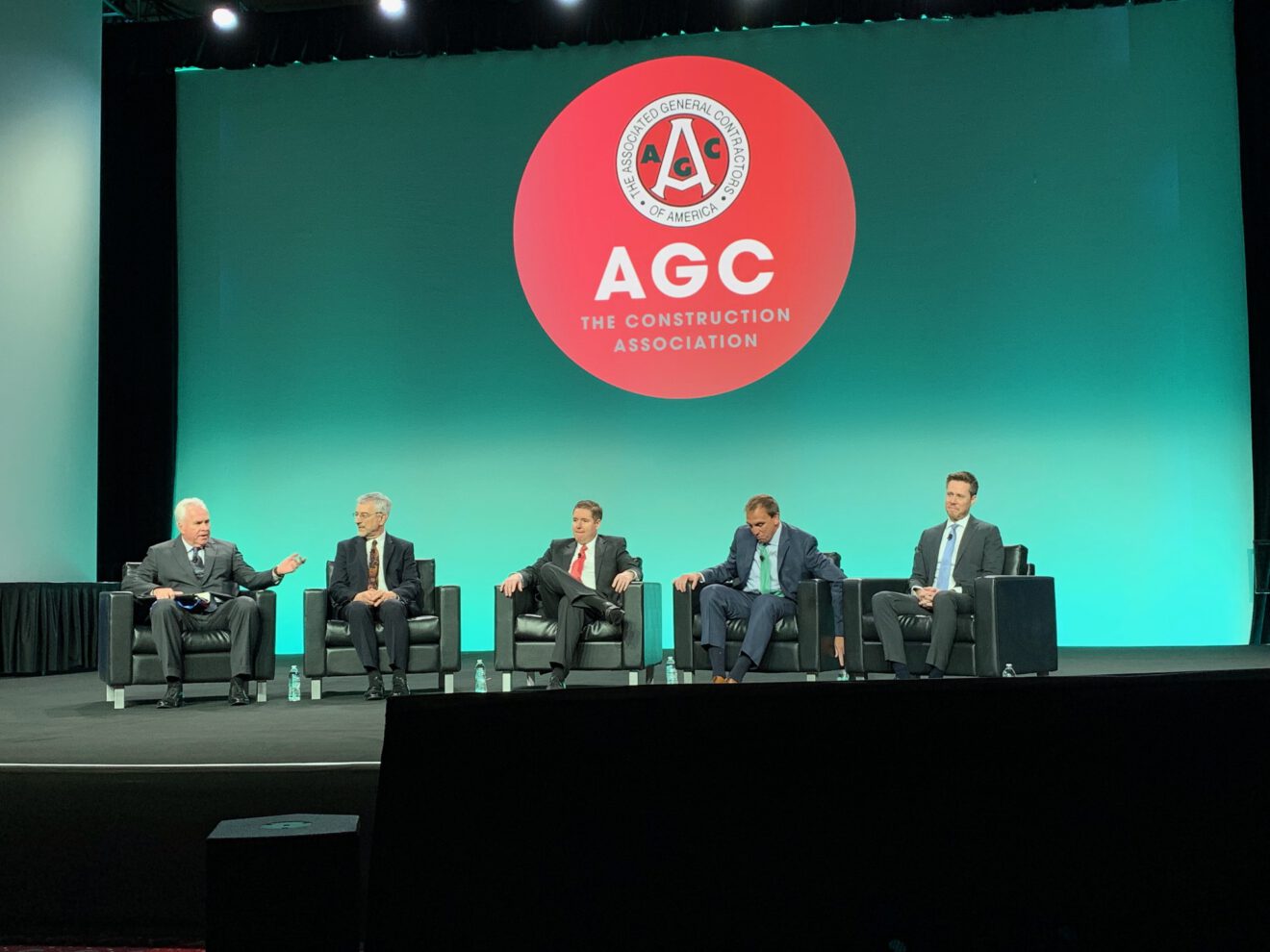If general contractors had any significant fear of an imminent recession, it may have been assuaged by Ken Simonson, chief economist at the Associated General Contractors of America, who said at AGC’s 100th Annual Convention that he was “optimistic that’s not going to happen.” When asked about the specific likelihood, Simonson cited the National Association for Business Economics’ recent report that forecasts the odds of a recession at around 20% this year and 35% next year.
But while those projections may ease some concerns, plenty of business issues are plaguing contractors – most notably the industry’s ongoing shortage of skilled labor. In a recent AGC survey, 78% of contractors reported difficulty finding workers and 85% rated the craft worker pipeline as “fair” or “poor.”
An honest assessment
During the convention, the Federal Highway Administration shared insight from its recently released “playbook” that provides eight strategies gleaned from a pilot program to help industry coalitions focus on identifying, training and placing the highway construction workers of tomorrow. Some AGC chapters, including those in Idaho, Colorado and Arizona, participated in the pilot and contributed to the some of the lessons from the playbook, including the need to let construction companies take the lead in workforce development and the need to engage community colleges. The lesson that perhaps stood out the most was that construction companies need to “be honest about what they’re fixing” when developing workforce needs assessments, said Community College of Denver’s Katrina Wert.
As Wert and others explained, construction companies often want to train employees based on the needs of the job, but what workers really need are the basic job and life skills needed to succeed on a construction site, such as elementary-level math, oral and written communication skills, and safety and health training. The pilot program found that workers who are rushed into technical construction training before they’re equipped with basic skills risk failing to attain or retain work.
Equipping educators
Another important component of the workforce equation is K-12 education and awareness. Some construction companies are going directly to children at schools to combat negative industry stigmas and promote the industry, but some organizations have found it is just as important for teachers to understand the value of a career in the field. For example, AGC’s Oregon-Columbia Chapter has been leveraging an eight-day externship program to give students an idea of what it looks like and means to have a career in construction. During the program, teachers in the state become familiar with a wide range of components of a construction business, including safety training, apprenticeship programs and human resources. They then apply what they’ve learned to their curricula to expose students to various relatable elements of construction in a classroom setting.
“The beauty of this program is that each teacher can find something that they can relate to,” says Frosti Adams, workforce and professional development manager at the AGC Oregon-Columbia Chapter. Adams has found that math teachers enjoy the estimating side of construction, while English teachers find value in the job proposals and professional emails written by human resources professionals. Science teachers can glean interesting information about how certain materials are made. In a similar vein, culinary arts teachers can come up with creative “recipes” for certain materials such as asphalt.
“You never think about asphalt as being a recipe, but it has to have certain tolerances,” Adams explains.
Policy solutions
School programming and industry coalitions are an important part of the workforce equation, but AGC says several other issues need to be addressed at the federal policy level. The association’s legislative team is working with stakeholders to double investments in career and technical education over the next five years. The association is also aiming to reduce the funding gap between career and technical education programs and traditional post-secondary education by calling for expanded eligibility of Pell Grants as well as more data about the earning potential of construction industry jobs and careers, said Jim Young, AGC’s director of strategic communications and congressional relations.
Young also touched on the balance between the desire to secure the border and the viability of immigration reform as another component of the industry’s workforce solution. AGC supports the creation of a market-driven, temporary guest worker program akin to the US’ student visa program, with workers returning to their home country once their visa expires. Young noted that in fiscal 2018, only about 3,800 H-2B visas were used by the construction industry and that there currently are more than 150,000 combined Deferred Action for Childhood Arrivals recipients and Temporary Protected Status holders are in construction.
While DACA and TPS have been protected by federal injunctions, Young doesn’t expect any resolution to work its way through the Supreme Court for another two or three years.
Evan Milberg is SmartBrief’s infrastructure editor. Prior to joining SmartBrief in July 2018, he served as the communications coordinator for the American Composites Manufacturers Association for three years.
If you enjoyed this article, sign up for SmartBrief’s AGC and AGC Risk Management newsletters.
